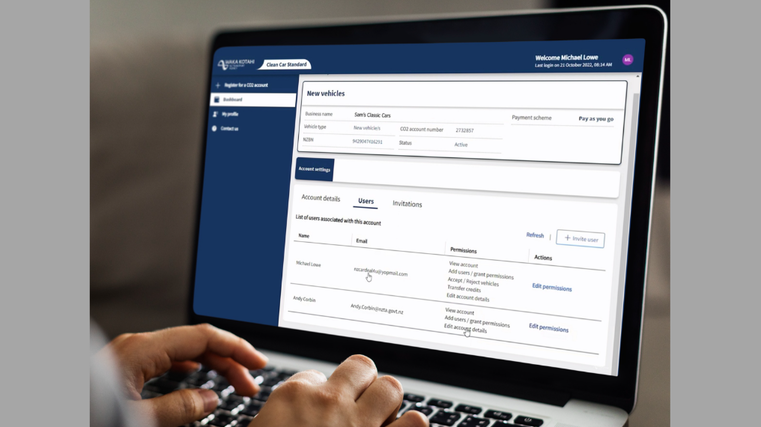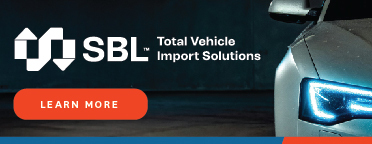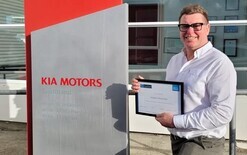Importers urged to get CO2 accounts

Importers of new and used light vehicles need to get an online account so they are ready to upload their stock into it from December 1.
That’s the advice of Darrell Hart, project manager at Waka Kotahi and part of the transport agency’s implementation team for the clean car standard (CCS).
“For the process to start, a CO2 [carbon dioxide] account is needed,” Hart told members of the Imported Motor Vehicle Industry Association (VIA) during an online seminar on November 8.
“They can be opened now. From December onwards, the account needs to be there. From January 1, someone needs to go in and accept the obligation.”
Hart explained that Waka Kotahi’s online system will manage CO2 emissions so importers can see what their obligations are for what they import under the standard.
“Unless the vehicle is accepted through the system, it will not be able to be registered,” he added. This doesn’t prevent technical areas of the entry-certification process being completed for an import, “but it will not be signed off until it’s in a CO2 account”.
Payment will be required later next year when that part of Waka Kotahi’s system is up and running, and it will be possible for any obligation to be paid by bank transfer or from credits paid into CO2 accounts.
Essentially, all vehicles and transactions will be recorded in the importer’s CO2 account. A charge on an import will become due when it’s accepted. It then becomes an obligation.
The transport agency is awaiting confirmation from the government as to when payments will be needed. They are expected to be deferred until later in 2023. Hart said: “We’ve got to have a staged roll-out, which creates some complexities for what’s already a complex policy.”
As for compliance with the CCS being completed at the certification stage instead of that traditionally being done at border check, there will likely be a pre-Christmas scramble to get vehicles attracting charges through the system.
More about accounts
There’s an automated acceptance process that can be activated in importers’ CO2 accounts. There will also be a function to bulk load vehicles into Fuelsaver. To do that, the VIN of chassis numbers will be required.
“There will be an API service for those who want to use a web service,” said Hart. “This is expected to be published by the end of the year.” He also provided this information about CCS accounts:
• Credits have a notional value. They can be offset in your own account. They only have a value if you choose to trade them and that depends on what you agree with the other party.
• The CCS system deals in CO2, and positive or negative CO2 values. They are only converted to dollar values when settled or traded.
• There is about to be a single-vehicle calculator in Fuelsaver as well as a file with every vehicle registered in New Zealand since August for reference purposes.
• In addition, there will be Ministry of Transport (MoT) calculations for more bulk planning in volumes.
• If you want to add a vehicle to an account, you need the CO2 rating and chassis number. Values will need more information about the vehicle’s CO2 value and to calculate its CCS value. The more information you have, the more likely you are to get a match in the system.
• Details can include the tare weight, whether the import’s new or used, and whether it is a passenger vehicle or commercial vehicle. Those are the fields on the updated Fuelsaver scheme.
• If you don’t provide enough information, you will get the default value for the vehicle. However, you can go back into the system to give more information on an import after entry certification.
• The timing of the standard’s roll-out means some importers might have had commitments to importing vehicles without full knowledge of the CCS’ obligations.
Graeme Manzi, senior project manager at Waka Kotahi, said importers can select any combination of vehicles in their account. There’s also a button to “select all”.
When importers pay for a combination of vehicles, the system will provide the importer with a CO2 a balance.
He added: “There’s flexibility to do anything you want with vehicles in the account. Open your accounts now and get users set up in the system so you make it easy for yourself when vehicles start to flow in and keep an eye out for communications from us in regard to functionality.”
Moving forward
From November 21, Fuelsaver will be updated. Assigning vehicles to accounts will become mandatory from December 1. On January 1, values start to count for anything that’s certified from then onwards.
“The default for accounts is pay as you go,” Hart said. “With fleet average, there is an annual obligation and [this account has] higher rates with payments due in the third month of the following year.
“Targets will get harder to meet over time – there will be prevalence for more charges and less credits. Unlike the discount, the CCS never pays out and it isn’t subject to revenue constraints, so there isn’t a funding issue. The MoT wants no fee-paying vehicles coming through the system.
“People can be very perceptive about what clean and dirty cars are. But because of the weight-adjusted values, you can get vehicles you think are dirty actually earning credits. So do some research to understand what the standards for the CCS are, which are based on CO2 emissions.”
Extra advice is for importers to take an early look at vehicles so they can be proactive about them. “If you source other information, then it can be proactively addressed in the certification process rather than in discussions after the fact.
“We will be running webinars as we go through relative to processes going live. We are going apace and publishing information on our website.”
New and used importers can email CCSImporter@nzta.govt.nz if they have questions, and visit nzta.govt.nz/clean-car-programme for more information and updates on the CCS.





